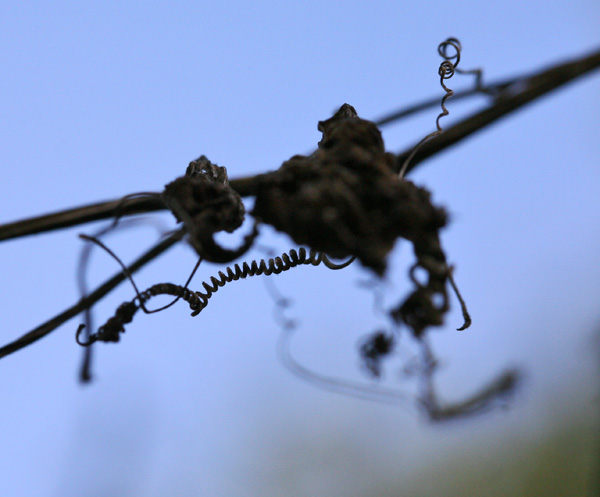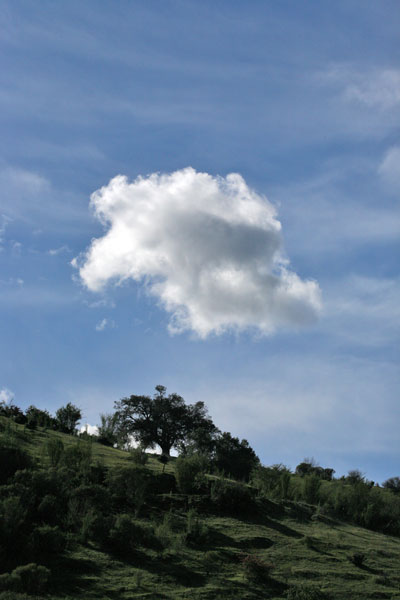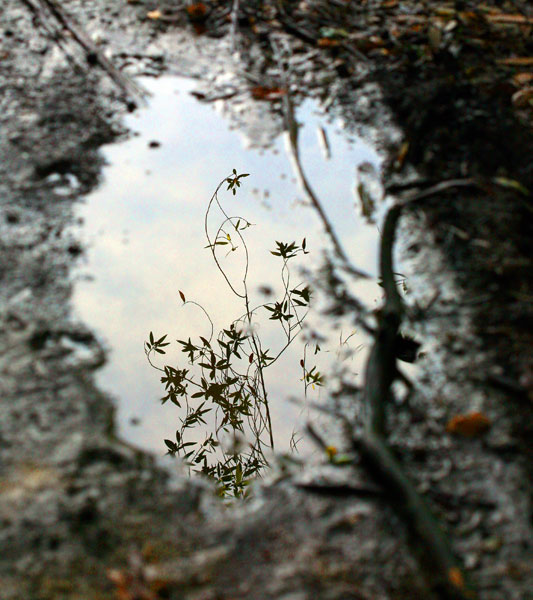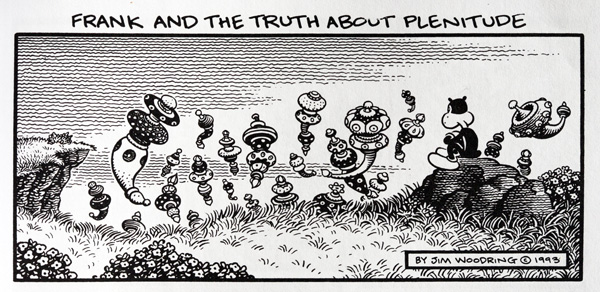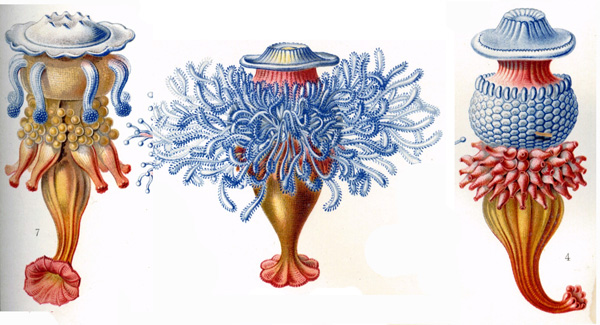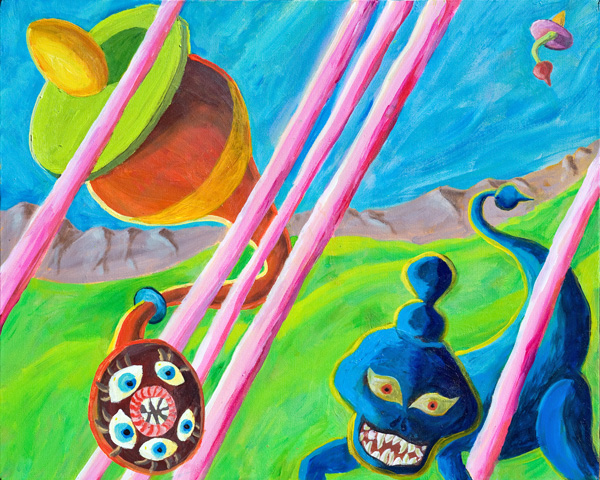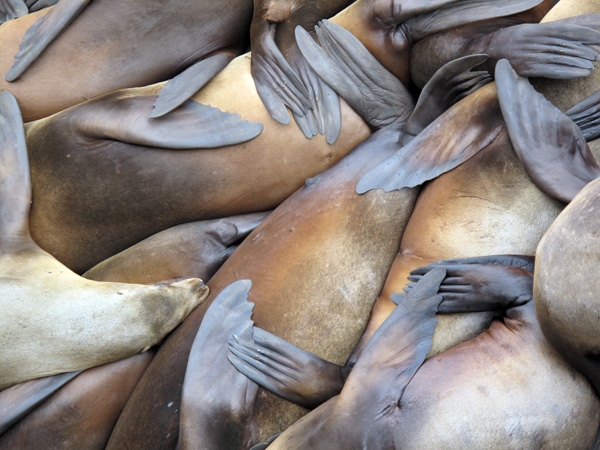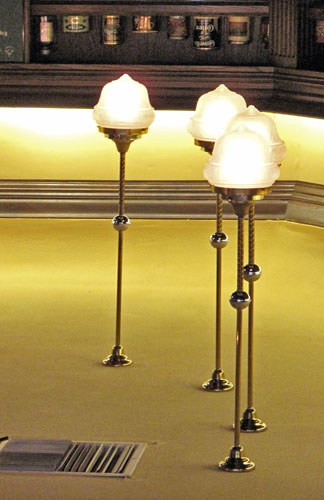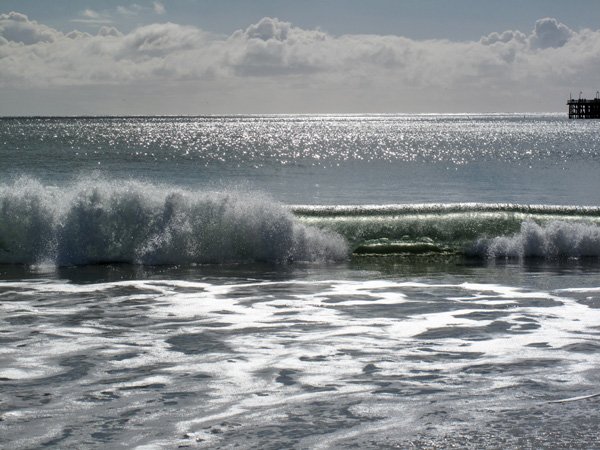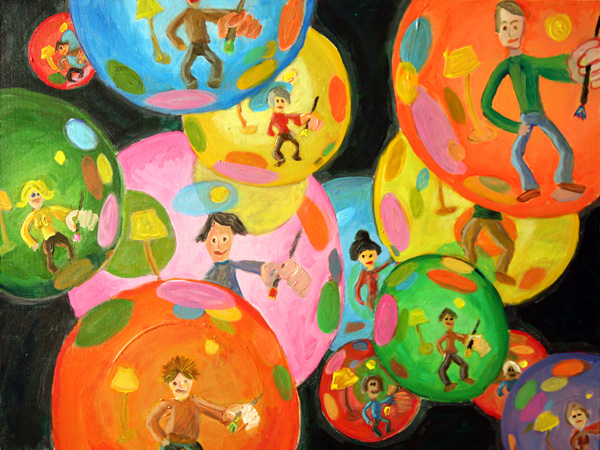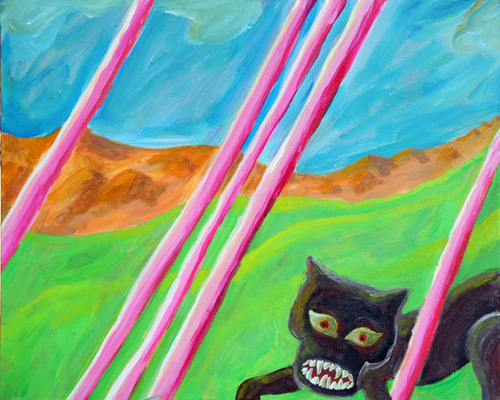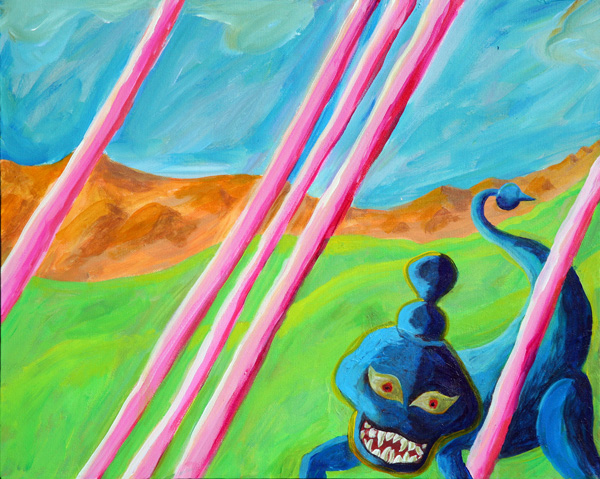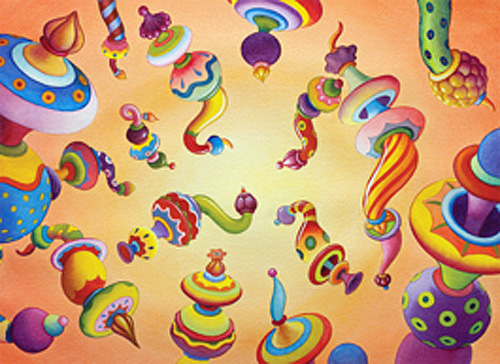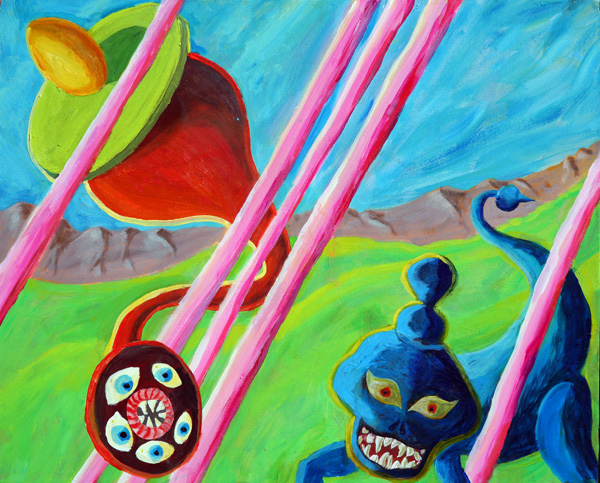As I’ve mentioned in this blog, I’m working on a novel called Jim and the Flims in which we have two worlds, the “real” world of Fatland and the alternate world of Flimsy.
In traditional style, I see a tunnel connecting the worlds. The tunnel between the worlds is in the basement of a crumbling Victorian house in Santa Cruz. The house, inhabited by three surf punks, is called the whipped Vic around town. Most of the time you can’t see it. You have to walk a certain labyrinthine path to get there.
How does Jim Oster find the whipped Vic in the first place? I’ll suppose that some higher being from Flimsy led him there the first time—she sent Jim signs in the form of a colorful bird flitting from tree to tree, a bird that was really an apparition of a jiva under the being’s control.
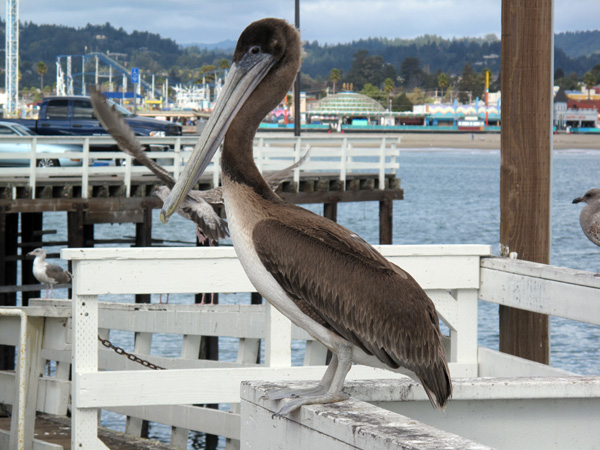
Now—this higher being in Flimsy is, let us say, a disenfranchised Queen or Princess whom Jim is supposed to help to power. But “Princess” too pedestrian a word, so I’ll use a Japanese word. A “kougou” is the wife of an Emperor, but a “jotei” is an Empress herself. So I call her a Jotei.
As it happens, the lovely Japanese-Italian actress Rosa Kato (see these Japanese commercials) played a girl named Ayaka in the 2007 Japanese TV series Jotei, based on a manga comic of the same name, which is about how the school girl Ayaka who, aided by a handsome underworld boyfriend, becomes the “empress” of the Osaka demimonde of bar hostesses. (Hostesses, the Japanese never tire of asserting, aren’t actually prostitutes.)

Initially I was seeing my Jotei character as being from a truly royal family of Flimsy jivas and she’s blocked from her throne by an evil anti-intellectual yuel. But, yeah, maybe it should somehow be like an Osaka nightclub scene…with the bad guys being Japanese gangsters in the pay of psychic polluters who, like, send out telepathic spam. That could be cool.
Anyway, we’ll suppose that Jotei Ayaka helped Jim get to the whipped Vic the first time around, but now the yuels are harassing her, and she can’t project an image of her jiva over to Fatland to help guide Jim, so Jim and Weena have to get back to Flimsy on their own. So they run all over Santa Cruz looking for some trace of the three surf punks from the whipped Vic.
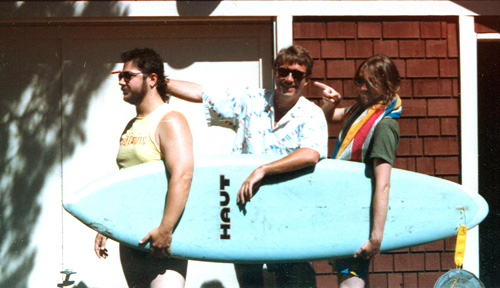
Here I need to ponder what kind of beings these punks are? Are they (a) regular humans, (b) flims, (c) some kind of interworld beings like security guards in airports or like aphids living on the “flower” of the whipped Vic, or (d) are they organelles or parts of the Whipped Vic “house” itself—as if they were pistils on a flower.
I’ll go with (a). It could be that lots of people know about Flimsy—the psychics and schizos and stoners and meditators. The three surf punks are locals who’ve found out how to squat in the twilight zone or interbrane or tunnelspace as we might best call it. In this case, it would indeed make sense to ask other surfers around Santa Cruz about these three. Suppose that Jim asks (as I was thinking the other day) one of his daughter’s high-school surfing pals.
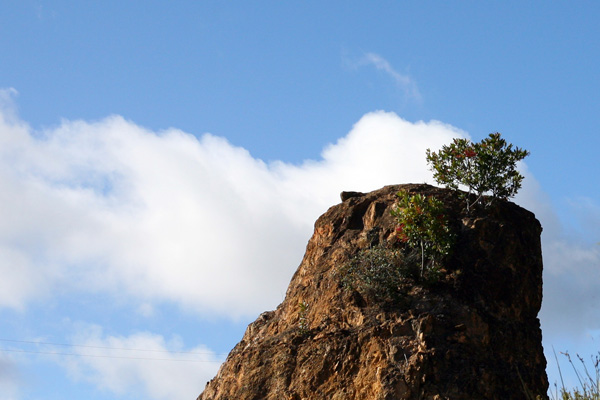
So now I need to invent that character. His name is Chang. He teaches introductory surf classes to goobs at Cowell Beach by the pier. He’s cynical, and a randy con man, but also kind of an enlightened surf sage who truly doesn’t care about anything. He’s ethnically Asian, but very much a Santa Cruz California boy. The guy who first owned my blue Haut surfboard that I bought second-hand was named Chang, so I like that name. Perhaps our Chang has bleached the tips of his hair to be blonde.
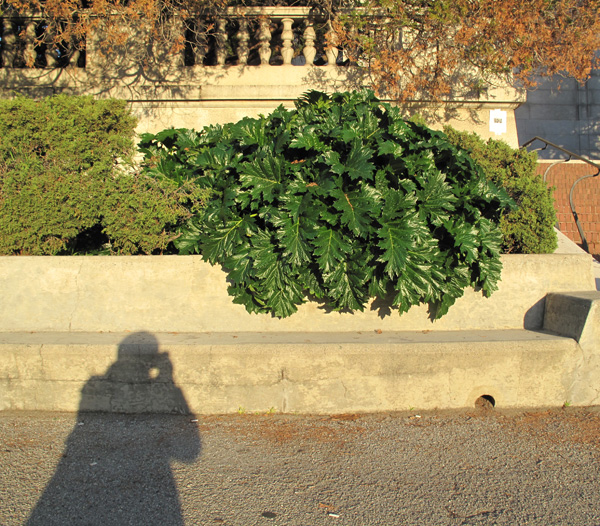
Chang escorts Jim and Weena to a wild party at the Whipped Vic that evening. During the day they have to dodge the yuels, and we get to see Dick Simly burst open to birth out two dozen jivas that fend off the yuels. But in the process, Jim is seen and is accused of murdering Dick Simly.











